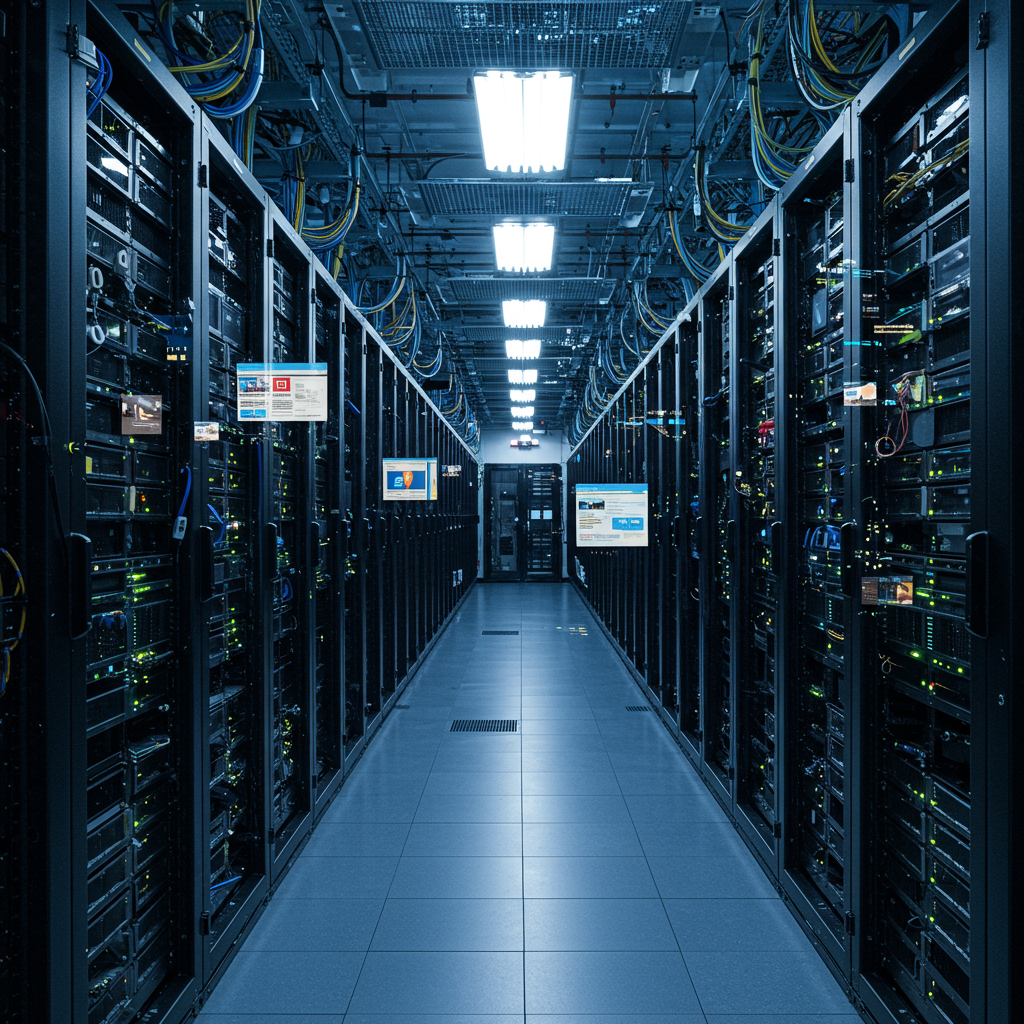The digital world experienced a massive jolt on November 18, 2025, as a significant Cloudflare outage brought down a vast swathe of the internet. Popular platforms including X (formerly Twitter), AI powerhouse ChatGPT, and entertainment services like Spotify and League of Legends became inaccessible for millions globally. This widespread disruption highlights the critical yet often unseen role Cloudflare plays in daily online life, underscoring the inherent fragility of centralized web infrastructure. As reports flooded in, users faced confusing error messages, revealing a deeper technical issue affecting the internet’s core.
What Happened During the Global Cloudflare Outage?
The widespread internet disruption began early on Tuesday, November 18, 2025, affecting services across multiple time zones. Cloudflare, a vital infrastructure provider, quickly acknowledged the problem, stating it was “investigating an issue which potentially impacts multiple customers.” Initial reports pointed to an “internal service degradation” within Cloudflare’s network, leading to pervasive “500 errors” across numerous websites and applications.
The suspected trigger for this global event was an “unusual spike in traffic” directed at one of Cloudflare’s key services. This surge, first observed around 6:20 AM ET (11:20 UTC), initiated a cascade of failures. Cloudflare swiftly launched an “all hands on deck” effort, focusing immediately on restoring services. While the exact root cause of the traffic spike remained under investigation, the company’s prompt communication via its status page provided a critical lifeline for affected businesses and users. Remediation efforts included temporary measures, such as disabling WARP access in London, to help stabilize the network.
Millions Affected: Which Major Services Went Down?
The impact of the Cloudflare outage was truly global, demonstrating the company’s extensive reach across the internet. From social media to AI and crucial financial applications, few sectors remained untouched. Users attempting to connect with their favorite online destinations were met with frustrating downtime, signaling a systemic problem rather than isolated issues.
Social Media and Communication Platforms Experience Downtime
Social media users felt the immediate brunt of the outage. X (formerly Twitter), a hub for real-time information, experienced significant downtime, with Downdetector reporting thousands of user incidents. Similarly, the popular dating and networking app Grindr was among the affected services, disrupting personal connections worldwide. These outages underscored how deeply integrated social platforms are into daily routines, and how a single point of failure can sever these vital links.
AI, Gaming, and Entertainment Services Hit Hard
The world of artificial intelligence and digital entertainment also faced major disruptions. OpenAI’s ChatGPT, a leading AI conversational tool, became inaccessible, alongside other AI platforms like Sora and Claude AI. Gamers were left stranded as titles like League of Legends and Valorant went offline. Music lovers couldn’t stream their favorite tunes on Spotify, and film enthusiasts lost access to Letterboxd. Even creative platforms like Canva reported intermittent issues, impacting productivity for many.
Commerce, Lifestyle, and Utilities Face Critical Instability
Beyond entertainment, the outage posed real-world challenges for essential services. Online marketplaces like Vinted and betting platforms such as Bet365 reported significant instability. Major financial services like PayPal and food delivery giants including Uber Eats also experienced intermittent issues. Crucially, even public transport applications, such as the NJ Transit app, presented “500 Errors,” preventing users from purchasing essential tickets. Ironically, tools designed to monitor internet health, like DownDetector and StatusGator, also struggled, highlighting their own reliance on Cloudflare’s infrastructure.
Beyond “Page Not Found”: Understanding the Error Messages
During the outage, users encountered specific and often confusing error messages, rather than the familiar “page not found” notifications. These messages offered a glimpse into the underlying technical issues affecting Cloudflare’s network. Many websites displayed a generic “Internal server error” or an “Error code 500,” indicating a problem on the server side rather than with the user’s connection or the website’s content itself.
More perplexing for some was the message: “Please unblock challenges.cloudflare.com to proceed.” This particular alert, seen by users attempting to access services like ChatGPT, led to false alarms. Tech experts quickly clarified that these were not actual blocks on user accounts or security threats emanating from individual devices. Instead, these messages were false positives, a symptom of Cloudflare’s security and content delivery network (CDN) failing to properly function. The common thread was a breakdown within Cloudflare’s protective and traffic-management layers, preventing legitimate user requests from reaching the target websites.
Cloudflare’s Urgent Response and Remediation Efforts
Cloudflare swiftly recognized the severity and global scale of the incident, providing continuous updates through its official status page. The company moved from an initial “investigating” phase to a more concrete “identified the issue and is now implementing a fix.” This rapid progression demonstrated the urgency and intensive effort involved in addressing a critical infrastructure failure.
Throughout the morning, Cloudflare’s teams worked relentlessly to restore service. Early reports indicated that some specific internal tools, such as Cloudflare Access and WARP, showed signs of recovery. By approximately 7:21 AM ET, Cloudflare announced that services were beginning to return online, though with a cautious warning that “customers may continue to experience higher-than-normal error rates” as the remediation efforts progressed. This phased recovery approach underscored the complexity of resolving such a widespread issue. Cloudflare also committed to releasing a detailed post-incident report once the root cause was fully understood, promising transparency and analysis of the event.
Why Cloudflare is a Critical Internet Pillar
To understand the immense impact of this outage, it’s essential to grasp Cloudflare’s pivotal role in the modern internet. Cloudflare operates as a “content delivery network” (CDN) and a robust security shield for millions of websites worldwide. Its network spans over 330 cities in more than 120 countries, making it a truly global digital backbone.
As a CDN, Cloudflare stores copies of website content on servers closer to users, accelerating loading times and improving performance. More critically, it acts as a frontline defense against cyber-attacks, including massive Distributed Denial of Service (DDoS) attacks, by filtering malicious traffic before it reaches a website’s servers. When an entity of this magnitude suffers a technical fault, it creates a choke point for a substantial portion of the internet. Many websites “sit behind” Cloudflare’s infrastructure, relying on its services for speed, security, and uptime. This extensive reliance means that when Cloudflare experiences issues, a vast array of online services becomes inaccessible, effectively highlighting its function as a central nervous system for a significant part of the web.
A Concerning Pattern: Internet Fragility Under Scrutiny
The November 18, 2025, Cloudflare outage is not an isolated incident but rather part of a concerning pattern that highlights the inherent fragility of the internet’s centralized architecture. This event occurred less than a month after a similar, major outage at Amazon Web Services (AWS), which similarly disrupted numerous online services like Venmo and Disney+. These recurring incidents raise serious questions about the stability and resilience of core web infrastructure providers.
The deep dependency on a few major infrastructure players, like Cloudflare and AWS, means that a single point of failure can have catastrophic, ripple effects across the entire digital ecosystem. This global interconnectedness, while efficient, also creates significant vulnerabilities. The outage had “real human effects,” disrupting not just entertainment but essential commerce, communication, and public services. Speculation also arose regarding the timing of the outage, coinciding with scheduled maintenance at Cloudflare’s Santiago (SCL) datacenter, though no direct link was confirmed. Nevertheless, these parallel events serve as stark reminders that as our lives become increasingly digital, the robustness of the underlying infrastructure is paramount.
Frequently Asked Questions
What caused the Cloudflare outage on November 18, 2025?
The Cloudflare outage on November 18, 2025, was initially attributed to an “unusual spike in traffic” to one of Cloudflare’s services. This traffic surge led to an “internal service degradation” and widespread “500 errors” across its network. While Cloudflare swiftly identified the issue and implemented a fix, the precise root cause of the traffic spike itself was still under investigation at the time. The company emphasized that its immediate focus was on service restoration, with a full analysis to follow.
How can I check if a website is down due to a Cloudflare issue?
If you suspect a website is down due to a Cloudflare issue, look for specific error messages like “Internal server error,” “Error code 500,” or “Please unblock challenges.cloudflare.com to proceed.” You can also check Cloudflare’s official system status page for real-time updates on their network. Additionally, popular outage tracking websites like DownDetector often show spikes in reports for Cloudflare or the specific website you’re trying to access, though ironically, DownDetector itself can sometimes be affected by major Cloudflare outages due to its reliance on the service.
What does a widespread Cloudflare outage reveal about internet stability?
A widespread Cloudflare outage reveals the significant reliance of the modern internet on a limited number of core infrastructure providers, highlighting a potential fragility in its centralized architecture. Cloudflare acts as a critical content delivery network and security shield for millions of websites, meaning a failure in its system can disrupt a vast portion of the internet simultaneously. This incident, following a recent AWS outage, underscores the “single point of failure” vulnerability and emphasizes the need for more resilient, potentially more distributed, web infrastructure to mitigate the global impact of such disruptions on businesses and users alike.
The Road Ahead: Understanding Internet Resilience
The Cloudflare outage on November 18, 2025, serves as a powerful reminder of the complex interdependencies that underpin our digital lives. While service recovery brought relief to millions, the incident reinforced the profound impact that disruptions to core internet infrastructure can have on global communication, commerce, and daily activities. As the digital landscape continues to expand, the demand for robust, resilient, and transparent infrastructure solutions will only grow. Cloudflare’s commitment to a detailed post-incident analysis is crucial for understanding the exact sequence of events and implementing preventative measures. Ultimately, fostering a more distributed and adaptable internet ecosystem will be key to enhancing its overall stability and ensuring uninterrupted access for everyone.




